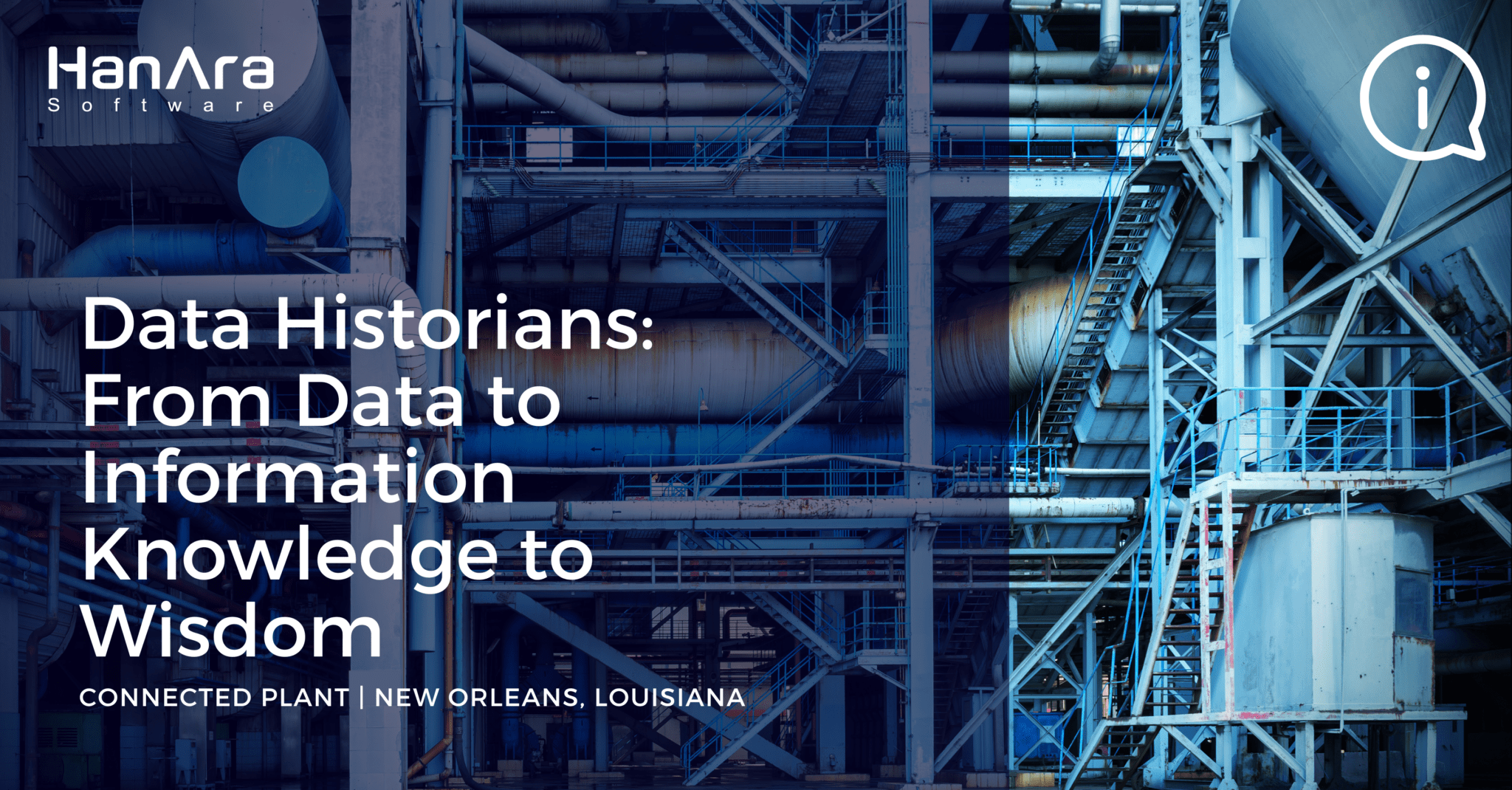At the end of June, members of the HanAra team participated in the Connected Plant Conference in New Orleans, Louisiana. This year’s conference focused on the intersection of technology, process, and people. Throughout the meeting, it was evident that regardless of the technology, whether digital twins, predictive maintenance, or quantum computing, organizations must connect the right people and processes to the right technology to create value. Even mature technology like data historians requires a strategy to maximize its value and make a positive operational impact.
No matter where you are on your digitalization journey, technology, process, and people must come together for project success. Each of these three facets depends on the others and keeping them in context is pivotal to gauging where change is needed. As you navigate evolving company environmental, social, and governance (ESG) goals and customer requirements, this event will help you understand stakeholder requirements relative to digital transformation and provide insight into the criteria required to measure value (by ensuring the quality of the data/processes).
The Evolving Role of Data Historians in a Connected Plant
In our data-driven world, we generate vast amounts of data, and technological advancements continually expand our ability to collect and measure new data types. Data historians have traditionally served as centralized repositories for measured data, and with automation advancements, their scope and size are increasing. Sensor technology improvements enable higher-resolution data collection and incorporate additional data types like acoustic, image, and video. Moreover, data historians now have improved integrations, connecting with traditional industrial control systems, third-party data sources (e.g., SQL and NoSQL databases), and applications (e.g., APM and ERP solutions). These advancements enhance the core components of a data historian: collect, archive, visualize, analyze, and collaborate.
Unleashing the True Potential
Despite the theoretical value of data historians, many organizations need help to derive meaningful insights from them in their day-to-day operations. Common pitfalls include limited data access for the right people, irrelevant or outdated dashboards, reports without actionable outcomes, and crucial assets missing from the historian. As a result, information sharing is often delayed, hindering timely decision-making. An organization needs a framework to extract actual value from the data historian to avoid these pitfalls.
The DIKW Model: A Continuum of Value Creation
To drive value creation, let’s look at the DIKW model. This model emphasizes the interconnections between data, information, knowledge, and wisdom, fostering a holistic approach to leveraging the capabilities of a data historian for business intelligence.
Data: The Potential Building Block
Data, although full of potential, holds no intrinsic value. Organizations often encounter two problems at this stage. First, they fail to collect the right data, limiting the insights available to their engineers. Second, they collect extensive data without progressing to the next stage—making that data meaningful.
Information: The Contextual Bridge
Information provides the context necessary to answer the questions of who, what, when, and where. Modern data historians offer improved visualizations and holistic perspectives on equipment. However, information overload becomes a concern. More information does not always equate to better outcomes. Focusing on relevant and actionable information is key.
Knowledge: The Application of Experience
Knowledge is the application of information based on experience. To unlock knowledge, we must connect the right information to the right people at the right time. For instance, when equipped with real-time and historical energy usage data, energy managers can identify overuse or energy-saving opportunities. Ensuring access to the right information empowers knowledgeable individuals to create organizational value.
Wisdom: Planning for the Future
Wisdom involves future planning and envisioning what’s next. Data historians excel at providing historical and real-time data, allowing us to understand where we’ve been and where we are. Wisdom helps answer the question of where we are going. And by asking new and interesting questions, we can identify new data requirements for future growth. This cyclical process drives continuous improvement and prevents complacency.
Intentional Engagement with the DIKW Model
To fully realize the potential of your data historian, continuous intentional engagement with the DIKW model is crucial. Each stage requires thoughtful consideration and implementation. Here are some questions to guide you through each step:
Data
- What data are we collecting or not collecting, and why?
- Do we connect to other databases across the enterprise? Are we utilizing additional data sources?
- Which data requires built-in redundancy based on mission criticality?
- Have we established a consistent and meaningful tag naming convention across the organization?
- How are we addressing security concerns while harnessing the power of our data historian?
Information
- Are we providing context and answering relevant questions with the information derived from the data historian?
- Do we suffer from information overload? How can we prioritize and present information effectively?
- Are we using improved visualizations to gain holistic perspectives on our equipment and operations?
Knowledge
- Are we connecting the right information from the data historian to individuals with relevant experience?
- Do we enable key personnel with real-time and historical data to make informed decisions?
- Are we fostering collaboration and knowledge sharing within our organization?
Wisdom
- Are we leveraging the insights gained from the data historian to develop a vision for the future?
- Are we asking new and thought-provoking questions to drive innovation and growth?
- Are we allocating resources and fostering a culture of continuous improvement?
Connected Plant Next Steps
Whether you are starting your data historian journey or have been utilizing it for years, intentional engagement with the DIKW model is essential. Transforming data into business intelligence requires careful consideration at each stage—data, information, knowledge, and wisdom. By applying this model, organizations can extract maximum value from their data historian, leading to improved operations, reduced costs, and a safer environment. Remember, the DIKW model is a continuous process, where each cycle builds upon the previous one, unlocking new opportunities for growth and innovation. Embrace the power of your data historian and embark on a journey of transforming data into actionable intelligence.

